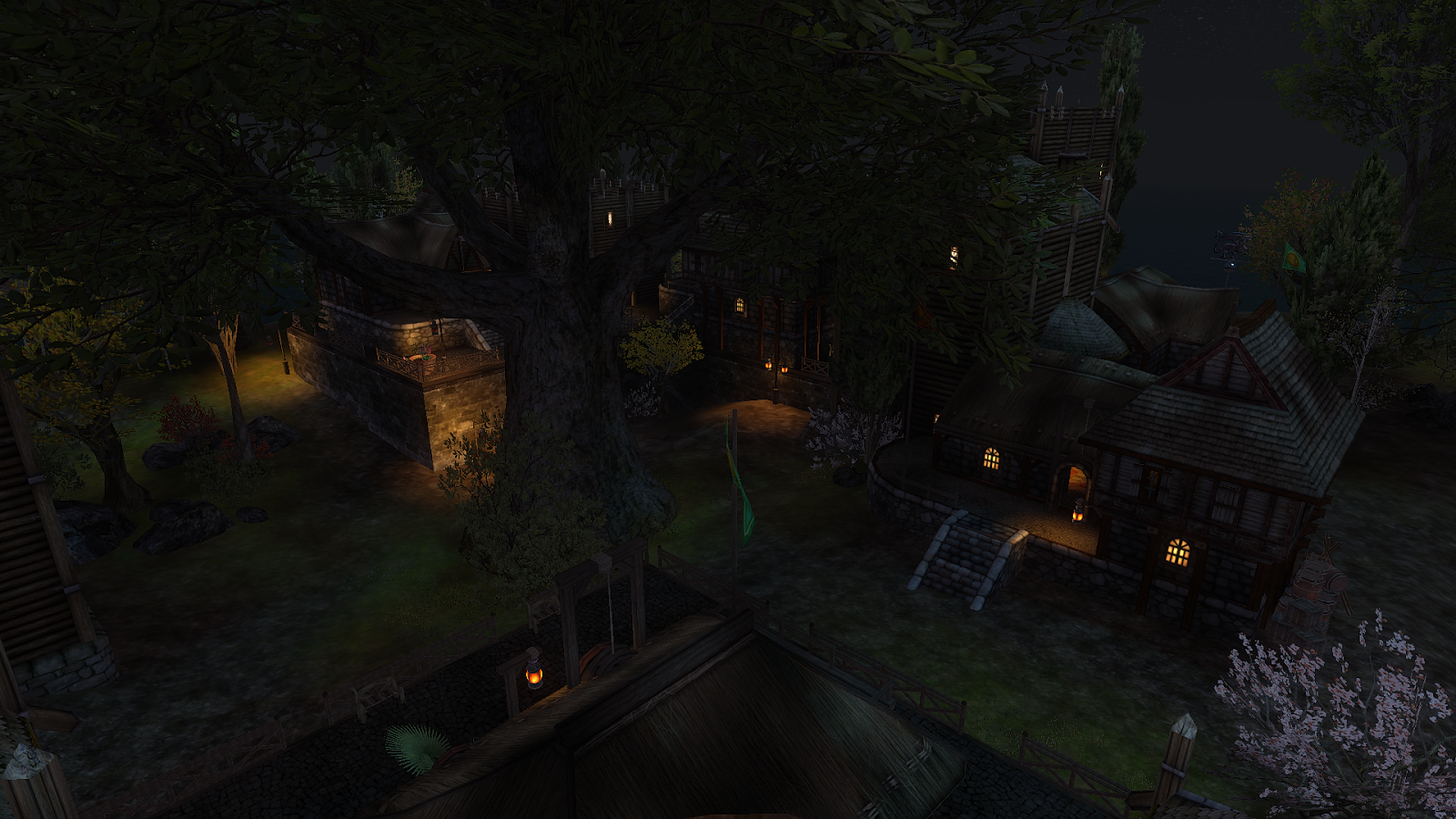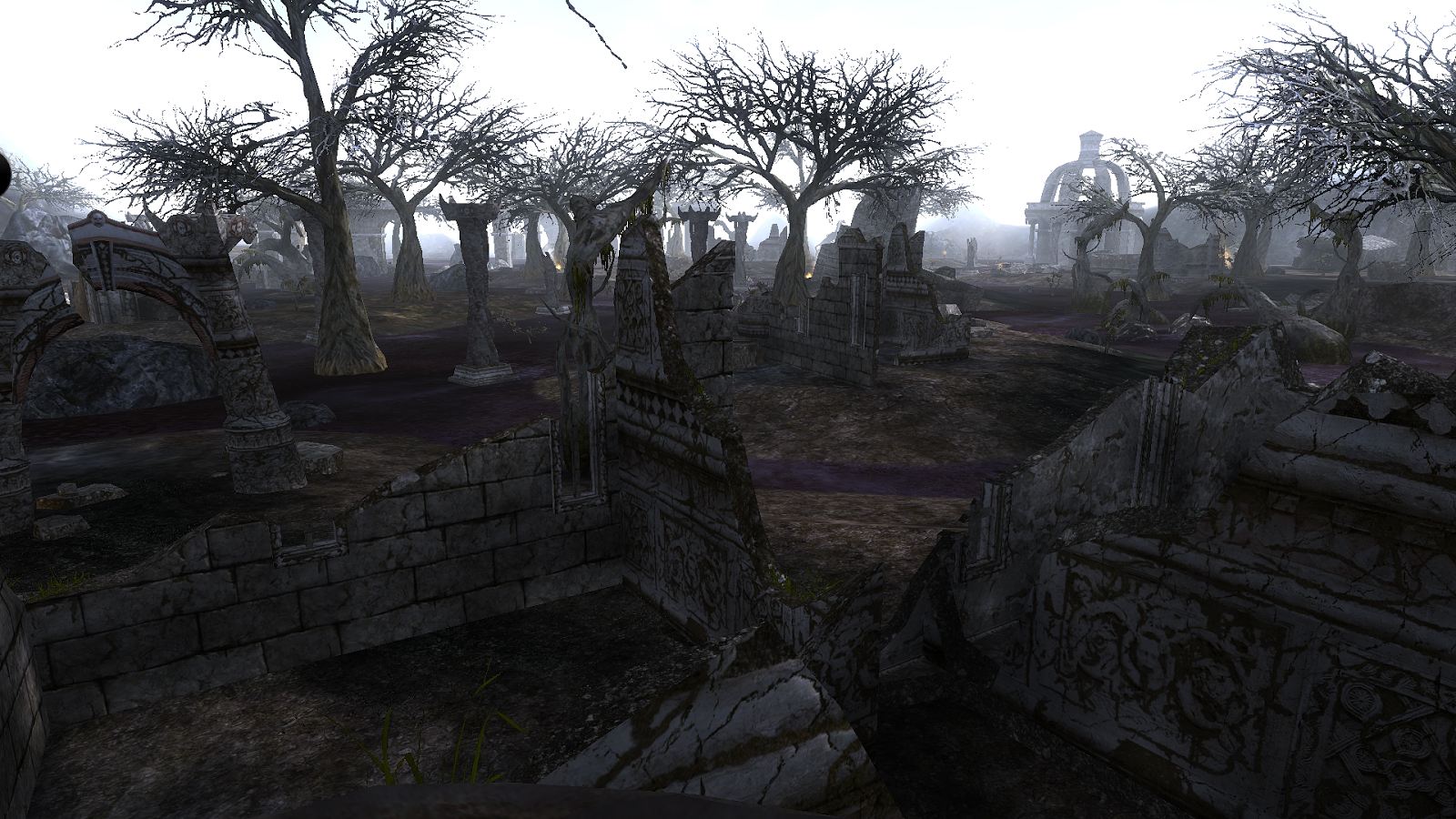 |
| (Click to enlarge) |
Intrigued by the tale of Garroth Dagon, I set out, perhaps foolishly, to see what he had seen.
I left immediately from the hospitality of Sweetwater when the account of the story had reached its full conclusion. There were many questions to be answered. What, if anything, did Garroth Dagon seek? What had he seen after crossing beyond the pyramid top? What had he done? Was his soul really gone, or did it linger within the shadow?
The first ship north from Sweetwater was a trade vessel bound for Apautan. It was the closest any ship route leaving from Sweetwater would get to my destination. I was a strange face for the crew considering the context of their voyage, robes clearly not the best wear for the journey, but the captain understood my purpose and that was enough to silence any questioning from the crew. I would not have minded their questions, but perhaps the peace I found in their ignorance was for the best.
After we reached Apautan, I promptly set out for the coast of Chultun. From there, I trekked north to the Strait of Iyrtan and the Mouth of the Shadow itself. I approached the strait from the south which put the entrance to the cave across the channel. I moved east and crossed where the cliffs gave way to flatter land. Once to the other side, I moved again west and into the cavern.
The entrance was somehow smaller than I had anticipated, though still large enough for a group of men to traverse by shoulders. Walking through it alone, I still felt small before the majesty of the opening beyond. My eyes were greeted by an impressive pyramid set amid a moat of water. The sun statue at its apex forfeited its origins; this was an Ithwen monument from long ago, spared from the wrath of the ancient dragon Far-Loradain likely by its fortunate location. A closer look at the moat also revealed the tops of smaller structures beneath the water's surface. Set somewhere among this mystical setting, seemingly near yet far as well, was a melodious and feminine voice.
The voice did not speak to me but seemed to chant some long lost hymn of the Ithwen elves. I could not understand the tongue but the beauty of the rhythm drew me in insouciantly. I carelessly meandered to the edge of the water and stepped one foot in. The dagger-like cold of the water sparked my awareness again. I wandered the outside of the cavern in search of the voice but could not find a source. No matter where I walked, it was never any softer nor louder but always seemed to come from some place further still.
After walking far enough about the outside of the cavern, a structure unlike the rest of the Ithwen buildings revealed itself behind the pyramid. I knew at once that here is where Garroth Dagon lost his soul from his body, and I was afraid. I could hardly bring myself to come closer, but the hymn seemed to grow louder once my eyes had found this structure. The reverberation now crashed all about me, a beautiful strata of melody and cacophony. I left immediately after the sound became to much to think against.
I write this now from the safety of the Mages Guild in Sanguine, and in my reflection I wonder if I could have seen more. If the fear I felt had not gripped my courage so tightly, perhaps I could have taken a few more steps and understood a few more details. I must always remind myself, however, that to know less and live to speak of it is better than to die with unshared knowledge. Now I will set about to decipher this Ithwen hymn, and perhaps better understand the fall of the Ithwen people.













